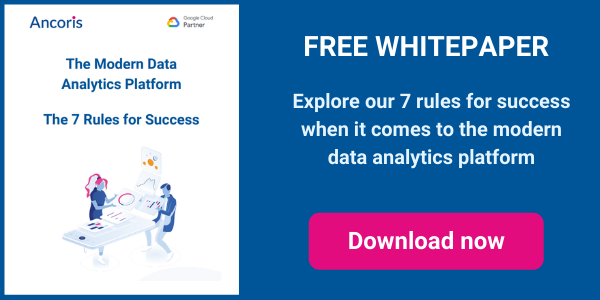Measuring the ROI for each of your marketing activities allows you to target your budget where it will be most effective and helps you justify your marketing spend to the board.
However, calculating marketing ROI accurately is not as simple as plugging a few figures into an equation or two. To determine the real ROI of a particular activity or campaign, you need to take account of a wide range of variables and consider how each activity contributes to a number of goals, from generating revenue to increasing brand awareness.
Here are 3 tips for measuring marketing ROI more accurately:
1. Account for the impact of external factors
Not everything that drives the success of your marketing efforts is under your control. For example, the weather can have a big impact on sales, whether you're selling ice-cream or thermal underwear. If your e-commerce payment processor is having issues — or your website is simply running sluggishly — customers may become frustrated and abandon their baskets. Major roadworks could mean town centre footfall past your shop is lower than usual.
If you don't take account of factors like these, you won't get a true picture of the effectiveness of the things that are under your control — and may end up turning away from tactics that are actually delivering the best ROI in the circumstances.
To understand the impact of these external factors, your marketing analytics platform should make it easy to import data from a wide range of relevant third-party sources. You should then be able to combine it appropriately with operational data from business systems and data from your marketing tools to produce a more accurate analysis.
2. Align your metrics with your goals
Because metrics like click-through rates, impressions and social shares are easy to access, there's a temptation to focus on looking at campaign success in terms of these short-term measures. However, it's likely your campaigns also have longer-term goals, such as building brand awareness, improving customer retention rates or increasing customer engagement. Trying to measure your marketing ROI too soon after you launch a campaign isn't going to give you any meaningful insights.
The issue is starkly illustrated by research from LinkedIn which found that 77% of digital marketers are measuring returns within the first month of their campaign, even though more than half of them know they're working with a sales cycle that lasts three months or more. Another survey by Oracle suggests that less than half the value of a campaign is realised in the first four weeks.
Short-term measures can still provide useful KPIs that indicate, for example, which banner ads or email subject lines are most appealing. But your marketing analytics platform should make it easy for you to measure ROI over the right time frame for each of your goals.
3. Combine and attribute data from different touchpoints
Customers now interact with your brand across multiple channels, online and offline. You're almost certainly already running omnichannel campaigns that aim to give customers consistent experiences and messages in every interaction. But that's only half the story. This proliferation of channels — combined with increasingly savvy consumers — means the buyer journey has become much more complex. Research suggests it can take an average of 6-10 touchpoints before someone is ready to buy.
Your ROI needs to be able to understand the influence each channel has on the customer journey for each of your customer segments. For example, TV ads may lead to only a small uptick in traffic to your ecommerce site but the customers coming through that route generate a greater proportion of your revenues and profits than the much larger number of customers clicking through from an email campaign or social media post. For younger consumers, search may be the most significant touchpoint. For high-ticket items, review sites like Trustpilot may play the largest role.
So simply looking at ROI measures for each channel separately won't tell you much about the overall impact of your marketing efforts. Your marketing analytics platform should make it easy for you to integrate data and analytics from different channels so you can see the role various channels play in driving revenues, brand awareness or improving customer retention rates. It should make it easy to apply an appropriate attribution model — weighting the metrics for each touchpoint by their influence in the sales cycle — and easy to change that model when necessary. And your platform should let you import and crunch the large amounts of data involved quickly enough that you can change your tactics mid campaign as you gain insights into which channels are most effective.
Delivering accurate answers quickly
For digital marketing agency and Ancoris customer QiH Group, a modern data analytics solution based on Google Cloud has transformed its ability to deliver marketing campaigns for each of the brands it works with. A more robust approach to importing and processing data means brand managers have greater confidence in their KPIs, while the scalable architecture means reports that used to take up to ten minutes to produce will now run in seconds. The company can add data from new channels or spin up reporting for an entirely new client in a matter of hours, so brand managers can start measuring the impact of both large and small changes to the campaign immediately. And moving forwards, QiH Group now has a solid foundation for adding advanced analytics to handle tasks such as predicting customer lifetime value.
The benefits of a modern data analytics solution are clear — but deploying one can seem a daunting prospect. That's why we've put together our CMOLab solutions. They make it easy to bring together and analyse your own data so you can tackle two key challenges.
- With Ancoris CMOLab Marketing Spend Optimisation, you can make the most of your marketing spend by tracking marketing KPIs and ROI in real time.
- With Ancoris CMOLab Recommendation Engine, you can give customers more of what they love by suggesting products based on their preferences.
Get in touch with our Data, Analytics and AI team to find out more.
Working with our data analytics and AI team
Our Data, Analytics and AI practice brings together a highly committed team of experienced data scientists, mathematicians and engineers. We pride ourselves in collaborating with and empowering client teams to deliver leading-edge data analytics and machine learning solutions on the Google Cloud Platform.
We operate at the edge of modern data warehousing, machine learning and AI, regularly participating in Google Cloud alpha programs to trial new products and features and to future-proof our client solutions.
We have support from an in-house, award winning application development practice to deliver embedded analytics incorporating beautifully designed UIs. We are leaders in geospatial data and one of the first companies globally to achieve the Google Cloud Location-based Services specialisation.
If you'd like to find out more about how we can help you build your own modern data and analytics platform, why not take a look at some of our customer stories or browse our resources. Needless to say, please get in touch with our team if you'd like more practical support and guidance.


